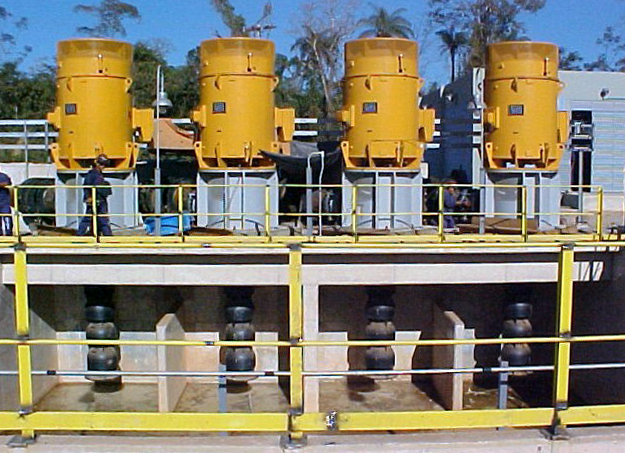Water Be Dammed: The Evolution of Modern Mine Dewatering
History proves that a successful civilization grows from the ground up. Take, for example, the ancient Greek city of Athens, built from the silver found deep within its soil. The very ground that supports a society’s foundation also provides for that society. Ranging from fuel, infrastructure, to décor, a civilization’s needs are met by the earth’s hidden minerals.

Mining began in ancient cultures and evolved throughout the centuries. Yet, while modern mining technology is cutting edge, today’s miners still face the basic historic challenges of gravity, air flow, and underground water.
THE WATER ISSUE
Below ground level, there is a point at which water saturates the soil. This point is called the “water table.” Its depth location depends on the topography of the land and the physics of atmospheric pressure. Science aside, the point is that this water level is continually a challenge to the process of mining.
THE DEWATERING PROCESS
By the year 25 AD, Spain created the Reverse Overshot Water-Wheel to “dewater” their underground mines. Historian Vitruvius explained that this device was first designed with a large wheel fitted with small boxes along its diameter. As the wheel turned at water level, the boxes lowered into the water, filled up, and lifted the water up to a designated water channel. Since then, the dewatering process evolved from simple boxes into today’s intricate piping systems.
MODERN DEWATERING SYSTEMS
Today there are two primary styles of dewatering systems.
A “wellpoint” system consists of multiple narrow tubes with slots at the ends. These tubes are fitted to a central dewatering pump at ground level and then driven into the ground around the perimeter of an excavation site. The suction tubes work collectively to draw up the groundwater. This system can lower the water table by about 6 meters. Often additional well points are added at deeper stages to further lower the water table to a maximum depth of 15 or 20 feet.
A “deep well” system involves a series of deep narrow wells called “boreholes” placed in a circular fashion around an excavation site. Each borehole is lined with slated piping, and electric submersible pumps are lowered to the bottom of each well. These vacuum-sealed wells create a hydraulic gradient that pulls the groundwater into the slats, creating a “cone of depression” around each well, and leaving little water in the surrounding soil.
Underground mining is indeed an ancient tradition that fuels the progress of humanity. As the mining process continues to evolve, one can only wonder how society will continue to flourish.
For more information on the evolution of the modern dewatering pumps. contact www.allightprimax.com
The Evolution Of Modern Mine Dewatering

